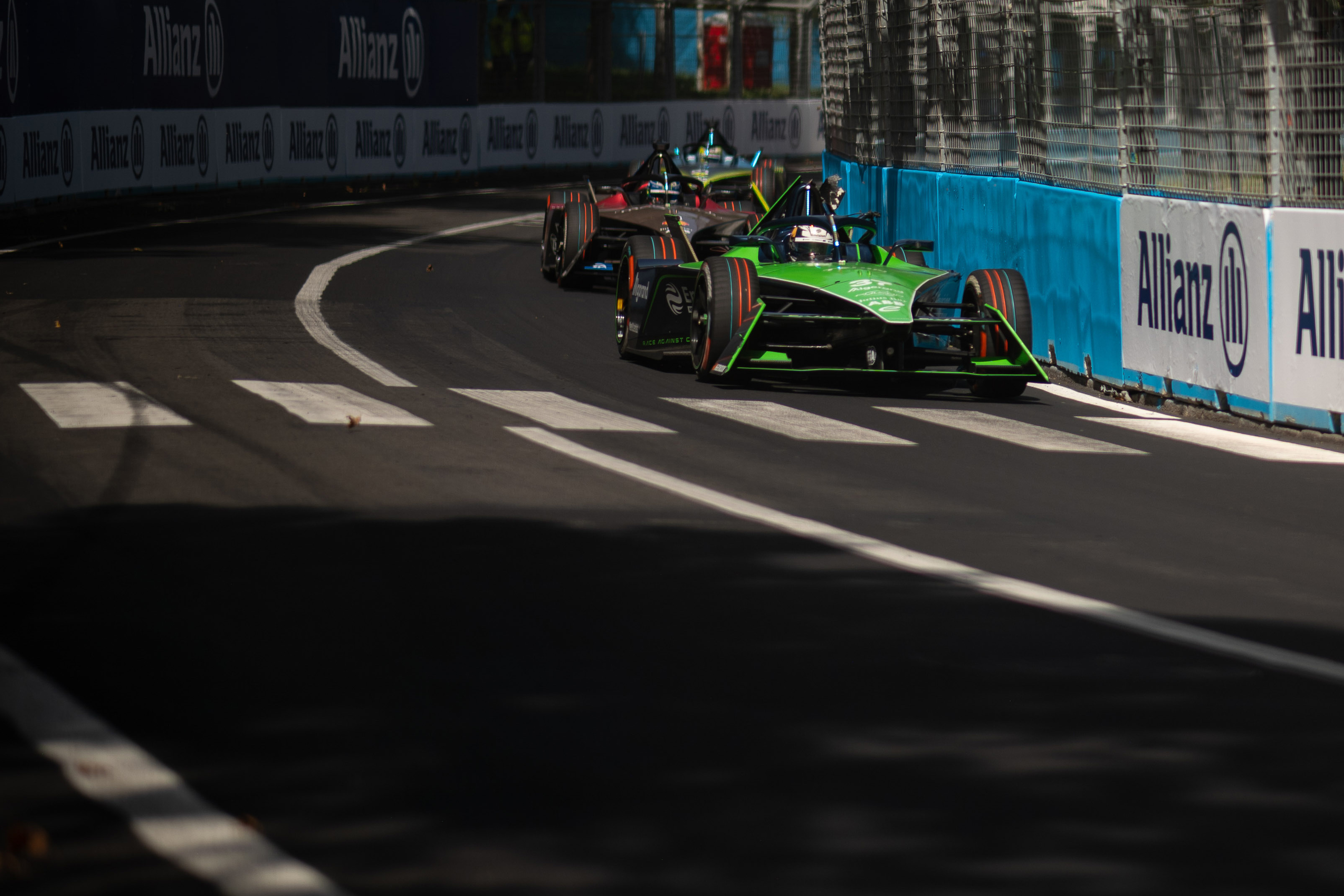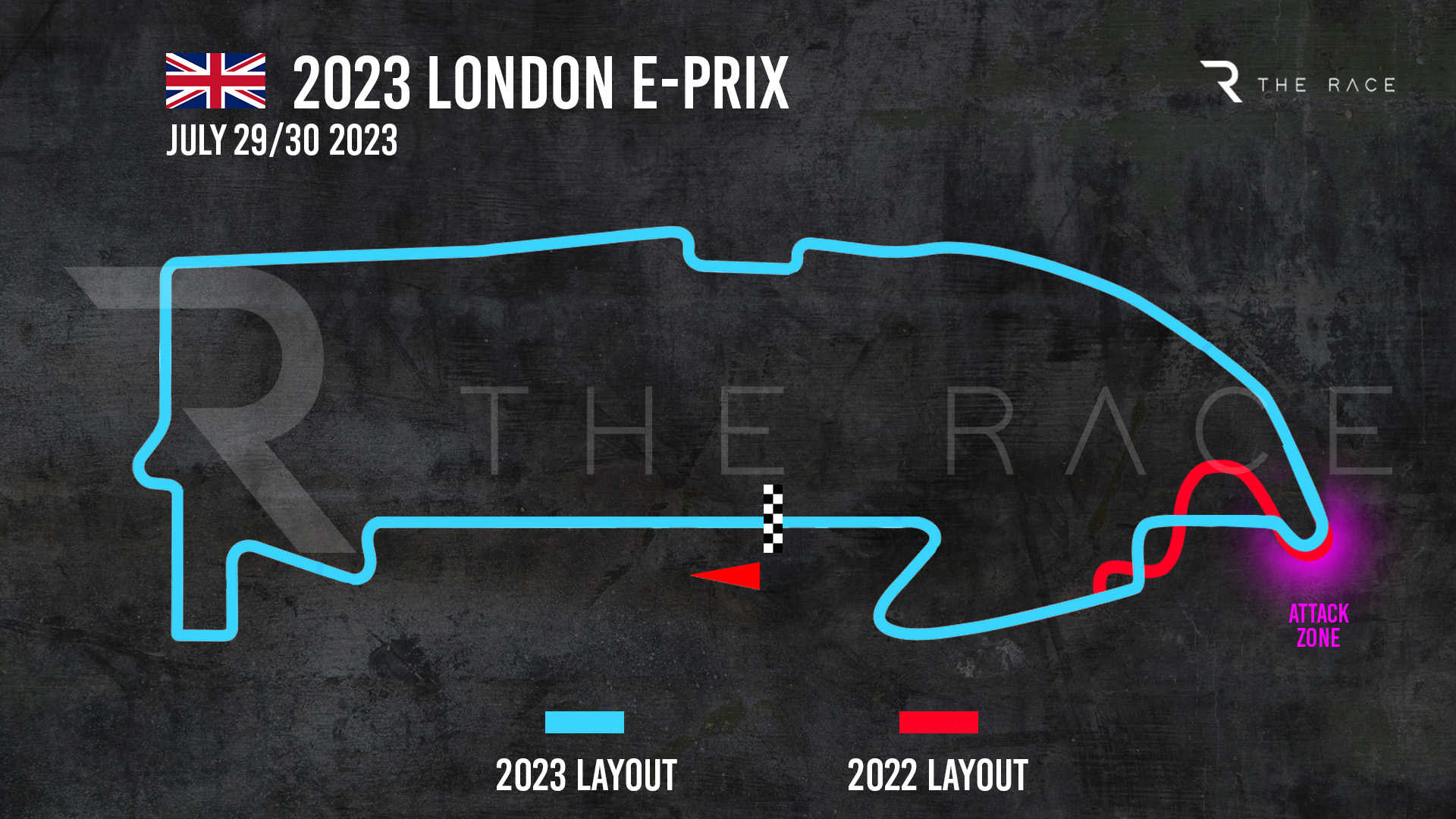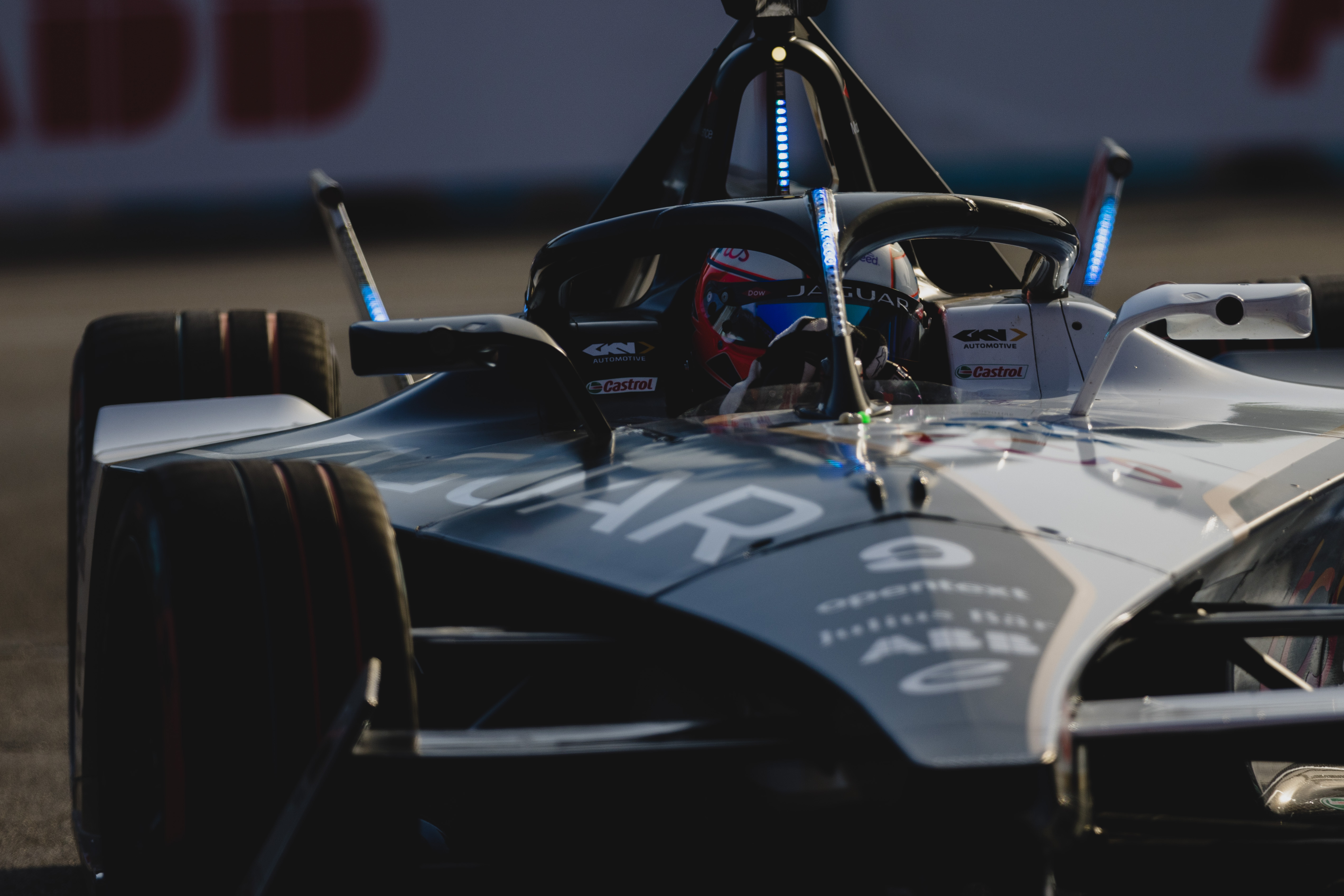The FIA has slashed the usable energy allowed for this weekend’s season-ending Formula E double header at ExCeL London in an effort to bring more strategic racing into play.
That decision should benefit the slightly more energy-efficient packages of Jaguar and its customer Envision Racing, both of which remain in teams’ title contention and also have Mitch Evans and Nick Cassidy respectively attempting to hunt down Jake Dennis in the drivers’ championship fight.

From a previous 38kWh of usable energy in the all-electric series, drivers and teams will now only have 27kWh at the ExCeL, which is believed to be the smallest amount ever used in a Formula E race.
The London races will run to different durations, with Saturday’s being 36 laps (46.66 miles) long and Sunday’s 34 laps (44.05 miles).
The net energy for Formula E races was initially devised as per the 2022-23 technical regulations to be a standard 41kWh but this was relaxed to reflect the challenges of individual races and brought down to an initial 40kWh in the early races of the season.
It became 40kWh for the Diriyah double-header at the end of January – rounds two and three of the campaign – before again being reduced for the Monaco E-Prix in April to a set 38.5kWh.
It then came down further for the Jakarta E-Prix races in June to 36kWh before going back up to 38kWh for the energy-critical race at Portland a few weeks later. In Rome earlier this month the energy was set at 37kWh.
Throughout the season the regen co-efficient – which reflects the ‘net usable energy = Discharge energy – [0.93] x Regen energy’ formula – has been set at 0.91, which is 0.02 less than the 0.93 mandated in the original draft of regulations.
Last year the usable energy was cut from 52kWh to 46kWh for the London ExCeL races but that was generally deemed to be insufficient to stop what was essentially flat-out running.

The reason why it has been so drastically cut this weekend is largely due to the tight nature of the unique indoor and outdoor facility in London’s docklands area, which has no discernible long straight or corners other than staccato left- and right-hand turns – though changes for 2023 will speed up the track and also affect energy management.
This means that drivers use little overall energy and in previous races have been able to run flat-out, promoting little chance for genuine overtaking and giving more propensity for collisions.
Several cars were eliminated in both the 2021 and 2022 London E-Prixs. Sam Bird suffered a broken bone in his hand in 2022, while the year before Andre Lotterer harpooned Antonio Felix da Costa at the first corner in desperation to get by the then DS Techeetah driver.

Several drivers also came in for severe criticism last year for over-defending, with Nyck de Vries in particular being deemed to have moved several times under braking while racing Cassidy. Pascal Wehrlein and Sebastien Buemi almost came to blows in parc ferme after an on-track disagreement. The pair had to be separated by Andretti group commercial director and sometime The Race columnist, Jim Wright.
The initial feeling within teams is that despite the drastic cut there will still be elements of flat-out racing in London, with a ‘slow-burner’ theme to races whereby early energy saving will take place before a breakaway comes in the final quarter.
Title protagonist Cassidy told The Race in Rome that he hoped that London “is not flat-out because it might not be that exciting”.
“But it’s hard to spend the energy round there anyway so, we’ll see,” he added.
Evans, Cassidy’s 2024 team-mate at the works Jaguar team, admitted that he was “never really a fan of double-headers anyway but it depends [if the the lap count for each double-header race is changed]”.
“Obviously they [the FIA] want to mix it up, but what we do want to do is avoid what happened in Jakarta where one race is completely flat-out,” he told The Race.
“Sometimes the one-lap difference can really affect that. I don’t see why it should be, if it’s done right, properly, it should be the same.

“I also think that they don’t want people to understand the race and throw a bit of a curveball, but you don’t want to make it flat-out boring for people as well.
“It’s a tricky one, but I just wish in the future we had more single-headers; I think that just puts more emphasis on one race, makes that race more exclusive, more people watching it. The double-header format just sort of dilutes the weekend in my opinion.”





